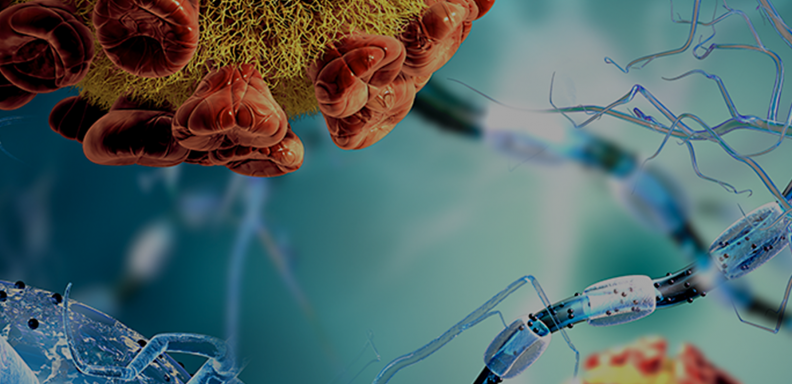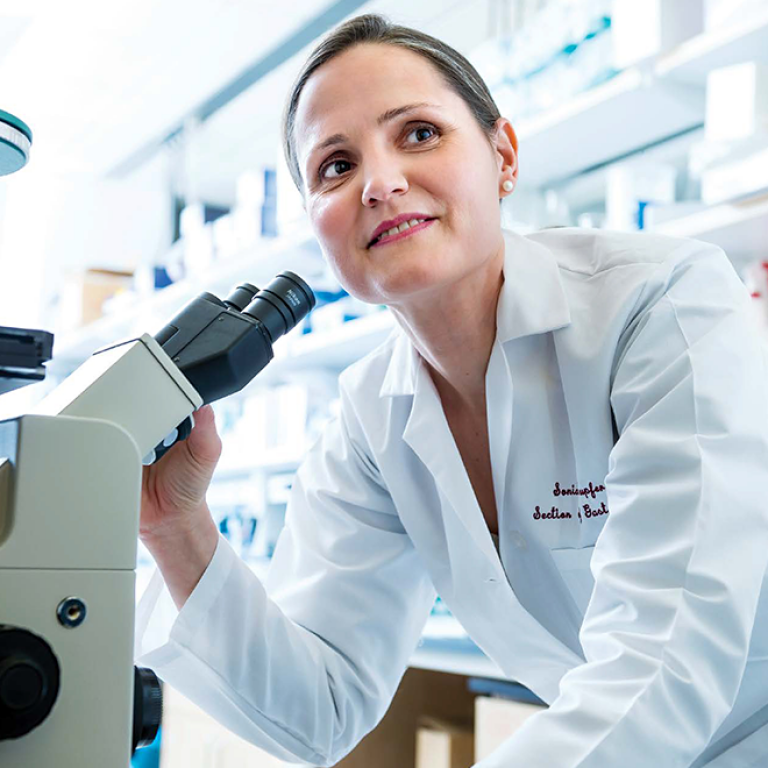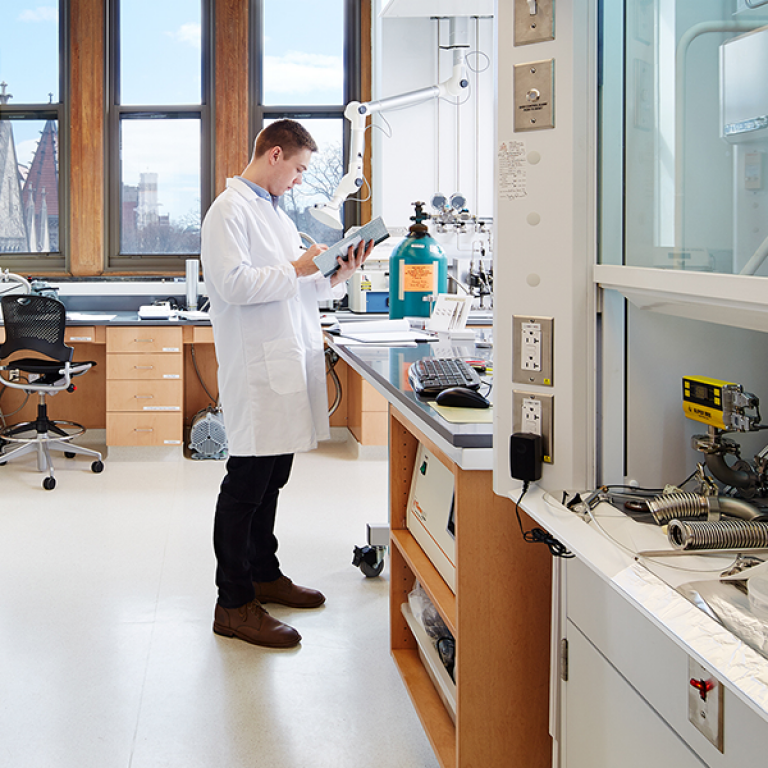After years of tweaking their lesson plans to meet students’ changing needs, as well as developing publications and platforms used by countless physicians-to-be, two University of Chicago professors remain committed to the pursuit.
Vinay Kumar, MBBS, MD, the Lowell T. Coggeshall Distinguished Service Professor of Pathology at UChicago, is credited with the discovery of natural killer immune cells. Any doctor who completed medical school in the last few decades, however, is likely to recognize Kumar’s name as a co-author of the “Robbins books,” the internationally recognized, gold-standard pathology textbooks.
His colleague, Husain Sattar, BS’93, MD’01, Professor of Pathology, is best known for developing Pathoma, a wildly popular multimedia course beloved by medical students worldwide.
This story appeared in Medicine on the Midway magazine. Read the Spring 2025 issue here.
The educators share a deep respect and fondness for one another, and also a progressive teaching approach. By adapting their methods and materials to prioritize practical knowledge and real-world application over rote memorization, they have made a big impression — and become unlikely stars, too.
Still, the pair prefers to focus on academics rather than acclaim.
“It is my greatest honor: the chance to interact with whoever wants to listen, and to give them something they can use to benefit patients throughout their careers,” Sattar said.
Taking a different direction
It wasn’t always this way. Earlier in his teaching career, before coming to UChicago, Kumar noticed gradually that students were coming to class less often.
“Faculty were angry, but I wasn’t; I knew there had to be a reason,” he said. “I told them, ‘Instead of yelling at students or penalizing them by grading attendance, why don’t we sit down and ask them why they don’t come? These are intelligent, motivated people paying a lot of tuition — why would they do something that hurts their access to knowledge?’”
Kumar invited students to a candid conversation, where they explained that the lectures they skipped mostly consisted of factual knowledge they could obtain on their own. What they wanted was practical ways to use that information.
“I decided we had to change our teaching,” Kumar said.
Starting in 1992, he slashed total course lecture time from 150 hours to 50, with the remainder focused on case-based discussions.
“We’d do things like show them a picture of a rheumatic heart and simply ask: ‘What do you think is happening here? How did this change occur?’ And that completely changed everything,” Kumar said. “We were finally giving them competency they couldn’t have reached alone.”
The pivot helped boost attendance, as well as students’ test and satisfaction scores. Eventually, Kumar and his co-authors published an updated pathology textbook that had just 150 pages of classic informational material, with the remainder comprised of cases built to challenge students.
Pathoma modules make pathology digestible
Sattar’s contributions to pathology education are personal. “In medical school, I was just completely overwhelmed,” he said. “It felt like drinking from a fire hydrant.”
He went through the foundational pathology course at UChicago three times: first as a medical student, then as a teaching assistant and a pathology resident TA. Even on the third time, he was struck by the sheer amount of material students were struggling to grasp.
“This idea for Pathoma arose in my mind because we were talking about lymphoma, carcinoma, melanoma, sarcoma,” said Sattar, who used the nomenclature as inspiration. “I said to myself, ‘Students are still missing the big picture.’”
A longtime devotee of pathology’s framework — methodical observations, connecting basic science principles to disease states and reflecting on diagnoses — Sattar created Pathoma in 2011 with those elements in mind.
Pathoma delivers simplified, clinically integrated explanations of only the most important topics, and it’s intended to be an affordable complement to classroom textbooks and lectures. With digestible video modules (featuring narration in Sattar’s calming voice) accompanied by a concise, easy-to-read textbook, the format, Kumar said, is popular because “it’s a multimedia resource that facilitates discussion and helps students truly understand things.”
People-focused approach
The teachers know their work isn’t done, and that all pathology educators must think creatively.
“Technology, including AI, is going to play an increasingly important role, but I don’t think it will — or should — become the primary method,” Kumar said.
Sattar agreed, noting that digital tools can’t replace the benefits students gain from interacting with teachers and one another. Any evolution, he said, should be rooted in the DNA that has guided the pair for decades: “How can we determine the best ways to take our students from where they are to where we want them to be?”



